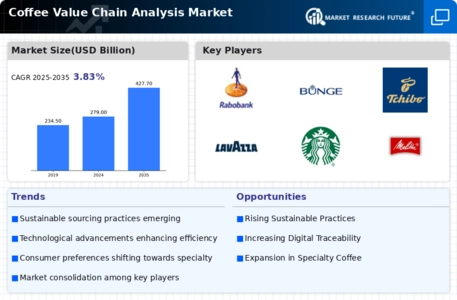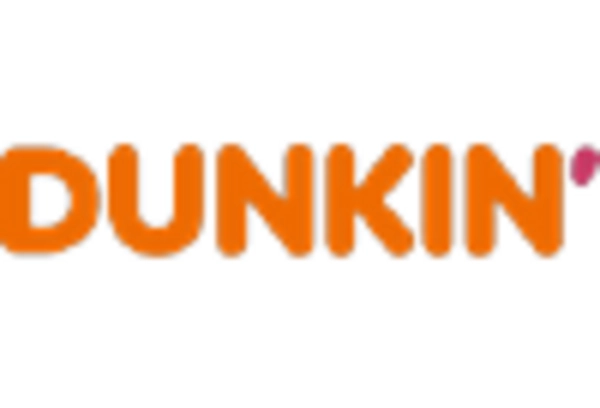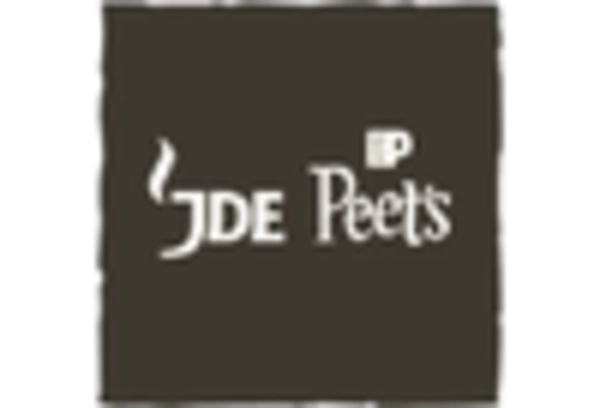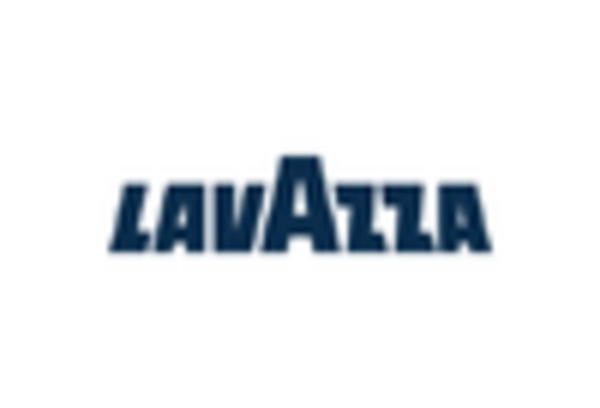The Coffee Value Chain Analysis Market is characterized by a dynamic competitive landscape, driven by evolving consumer preferences, sustainability initiatives, and technological advancements. Major players such as Nestlé (CH), Starbucks (US), and JDE Peet's (NL) are strategically positioned to leverage these trends. Nestlé (CH) focuses on innovation in product offerings, particularly in the realm of sustainable coffee sourcing and premium instant coffee products. Starbucks (US) emphasizes digital transformation, enhancing customer engagement through mobile applications and loyalty programs, while JDE Peet's (NL) is expanding its footprint through strategic acquisitions and partnerships, particularly in emerging markets. Collectively, these strategies contribute to a competitive environment that is increasingly focused on sustainability and consumer-centric innovations.
Key business tactics within the Coffee Value Chain Analysis Market include localizing manufacturing and optimizing supply chains to enhance efficiency and reduce costs. The market structure appears moderately fragmented, with a mix of large multinational corporations and smaller, niche players. The collective influence of key players shapes market dynamics, as they compete not only on product quality but also on sustainability practices and technological integration.
In August 2025, Starbucks (US) announced a partnership with a leading tech firm to enhance its supply chain transparency through blockchain technology. This strategic move is significant as it aims to provide consumers with detailed information about the sourcing of their coffee, thereby reinforcing the brand's commitment to ethical sourcing and sustainability. Such initiatives are likely to resonate with environmentally conscious consumers, potentially increasing brand loyalty.
In September 2025, JDE Peet's (NL) launched a new line of eco-friendly coffee pods made from biodegradable materials. This action reflects a growing trend towards sustainability in the coffee industry, as consumers increasingly demand environmentally responsible products. By aligning its product offerings with consumer values, JDE Peet's (NL) positions itself favorably in a competitive market that prioritizes sustainability.
In October 2025, Nestlé (CH) unveiled a new digital platform aimed at enhancing customer engagement through personalized coffee experiences. This platform utilizes AI to recommend products based on individual preferences, showcasing Nestlé's commitment to innovation and customer-centricity. Such technological advancements are likely to set the company apart in a crowded marketplace, emphasizing the importance of digital transformation in maintaining competitive advantage.
As of October 2025, current competitive trends in the Coffee Value Chain Analysis Market are heavily influenced by digitalization, sustainability, and the integration of artificial intelligence. Strategic alliances are increasingly shaping the landscape, as companies collaborate to enhance their technological capabilities and sustainability efforts. Looking ahead, competitive differentiation is expected to evolve, with a notable shift from price-based competition to a focus on innovation, technology, and supply chain reliability. This transition underscores the importance of adapting to consumer demands and leveraging technological advancements to maintain a competitive edge.


















Leave a Comment